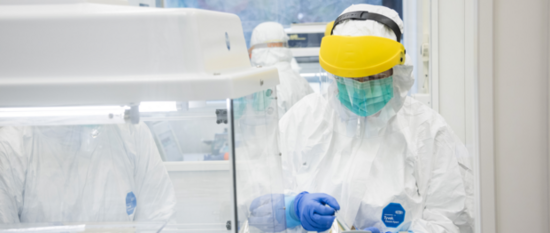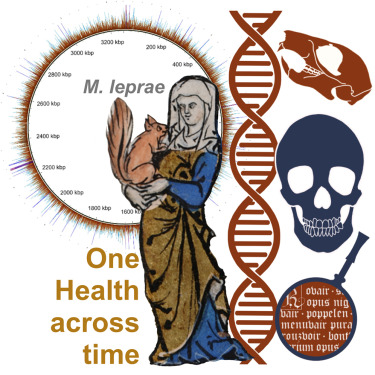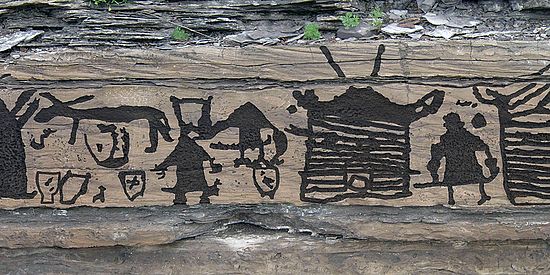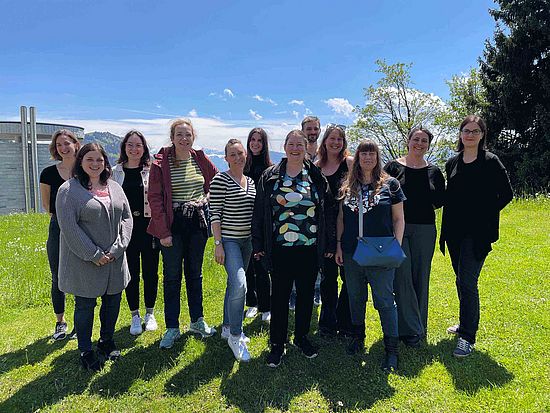
Archaeological Sciences
Research Group Archaeological Sciences / FG Schuenemann
Archaeological Sciences focuses on the evolution of human health with specific interests in the evolution of pathogens and microbiomes over time.
The research group Archaeological Sciences specializes in studying the evolution of human health, with a particular focus on tracking the evolution of pathogens and microbiomes throughout history.
Presentation of the Group
We extract DNA from diverse samples with ancient, historical, and contemporary background to enhance our understanding of how humans adapted to shifts in environment, diet, and pathogens. Using state-of-the-art techniques in ancient DNA in combination with Next Generation Sequencing, our main objectives include gaining new perspectives on host-pathogen interactions in the past and retracing the evolutionary trajectories of pathogens. Through the application of ancient pathogen genomics, we can recover the causative agents of historical pandemics and help in reconstructing the origins and evolution of significant human infectious diseases, such as leprosy or syphilis.In line with our ancient DNA research, we further incorporate ancient protein analysis in order to identify active infections in past populations.
- Medieval leprosy genomics
- Origins of treponemal diseases
- RESERVOIR
- Ancient Proteomics
Medieval leprosy genomics
Leprosy stands as one of the oldest documented and most stigmatized diseases in human history. While prevalent throughout medieval Europe, its evidence declined in the 16th century and subsequently disappeared from the continent, however the origins and historical dissemination of the disease remain unresolved. Today, there are still over 200,000 new leprosy cases being recorded annually, primarily in more tropical climates. Within this research, we apply ancient DNA techniques together with next-generation sequencing to uncover the diversity and geographic spread of the causative agent of leprosy, Mycobacterium leprae. With the discovery of new genomes over time, we aim to enhance our comprehension of the disease's past and its evolutionary history
Origins of treponemal diseases
Treponemal diseases, including syphilis, are widespread globally, with syphilis posing as a re-emerging global threat. Nevertheless, the origins of these diseases remain mysterious, sparking intense debate within the scientific community. In this project, we focus on both ancient and contemporary samples of Treponema pallidum to reconstruct the historical and modern diversity of its various subspecies. Through this research, we aim to shed light on the evolutionary history and spread of these diseases.
RESERVOIR -Revealing Evolutionary Systems behind Epidemic Reservoirs of Infectious, Re-emerging diseases
The RESERVOIR project aims to illuminate the role of animal reservoirs as resource related to human-infecting pathogens and interspecies transmissions across time. The project links archaeogenetic methods with historical, zooarchaeological and human osteoarchaeological analyses, and integrates these in computational modelling to investigate the spread and behavior of pathogens, many of which devastated the past human populations, and can pose a threat of re-emergence in the modern day. With a main focus on rodents that exist in close contact with human societies, RESERVOIR utilizes an under-investigated resource of information on host-pathogen dynamics. The past population ecology of the animal disease carriers is studied to point out the transmission routes of epidemics and to piece together the adaptive strategies developed by the infectious agents over time. Similarly, the socioeconomic and cultural aspects of human communities and behaviour are considered from both historical and modern point of view, in order to gain a comprehensive overview of the circumstances in which epidemics arise and thrive.
Ancient Proteomics
Concurrently with metagenomic ancient DNA (aDNA) investigations on pathogens, we have integrated protein analysis to discern active infections in historical populations. Supported by a grant from the Swiss National Science Foundation Ambizione program, this initiative is geared towards identifying host immune proteins linked to mycobacterial ailments, including tuberculosis and leprosy, alongside establishing a comprehensive archaeological human immune proteomic profile. While DNA analysis offers precise bacterial pathogen identification, proteins are synthesized in response to exigent circumstances, with immune proteins being particularly induced by pathogenic invasion, inflammation, or physiological stressors. The amalgamation of these methodologies promises insights into pathogenic infections and the adaptive human immune system. Furthermore, alongside paleoimmunology pursuits, the Ancient Proteomics team delves into inquiries concerning human dietary habits and culinary practices, leveraging the examination of archaeological specimens such as artifact residues and calcified dental plaque.



Staff

RESERVOIR -Revealing Evolutionary Systems behind Epidemic Reservoirs of Infectious, Re-emerging diseases
The RESERVOIR project aims to illuminate the role of animal reservoirs as resource related to human-infecting pathogens and interspecies transmissions across time. The project links archaeogenetic methods with historical, zooarchaeological and human osteoarchaeological analyses, and integrates these in computational modelling to investigate the spread and behavior of pathogens, many of which devastated the past human populations, and can pose a threat of re-emergence in the modern day. With a main focus on rodents that exist in close contact with human societies, RESERVOIR utilizes an under-investigated resource of information on host-pathogen dynamics. The past population ecology of the animal disease carriers is studied to point out the transmission routes of epidemics and to piece together the adaptive strategies developed by the infectious agents over time. Similarly, the socioeconomic and cultural aspects of human communities and behaviour are considered from both historical and modern point of view, in order to gain a comprehensive overview of the circumstances in which epidemics arise and thrive.
Quick Links
Social Media




